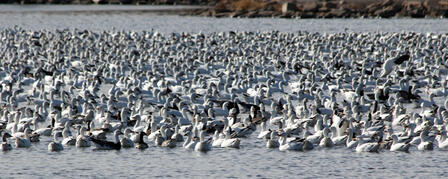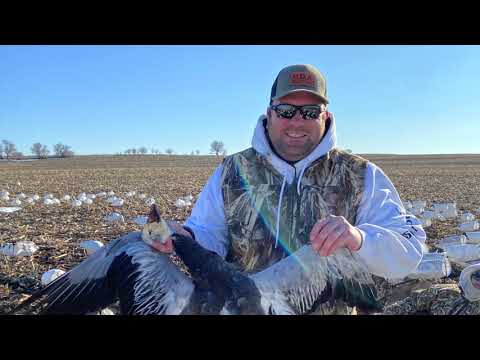
Contents
- 1 Everything We Thought We Knew About Snow Geese Was Wrong
- 1.1 The Spring Conservation Order Didn’t Really Work
- 1.2 Snows Have Abandoned the Texas Coast
- 1.3 Snows Actually Aren’t Eating Themselves to Extinction
- 1.4 Snow Geese Are Breeding in New Areas and Growing in the Pacific Flyway
- 1.5 Booming Goose Populations Could Hurt Other Waterfowl
- 1.6 Snow Goose Hunters See Changes in the Field
Everything We Thought We Knew About Snow Geese Was Wrong
In 1999, biologists miscalculated the number of mid-content snows by 5 million birds. The population was thought to be 3 million, but it was actually 8 million. Today, there are around 10 million adults in the population, down from a peak of 16 to 18 million in 2013.
Waterfowl managers believed that hunting adult mid-continent light geese could preserve the birds’ nesting habitat. However, despite hunting efforts, the population has not declined as anticipated.
The Outdoor Life Podcast: What We Got Wrong About Snow Geese
Snows aren’t eating themselves into extinction as predicted. They have adapted and found different wintering and nesting grounds.
There is still much we don’t know about snow geese and their impact on other waterfowl species. Questions remain about why they are expanding their range and whether their continued growth will harm other species.
The Spring Conservation Order Didn’t Really Work
The goal of the spring conservation order was to reduce light goose populations by half over 10 years. However, because the population was larger than estimated, the order was not effective.
The continental harvest of snow geese has doubled since the conservation order began, but it hasn’t made a significant impact on the population.
Shooting adult snow geese is the most effective way to decrease the population, but it is challenging. The number of snow geese killed has increased over the years, but it hasn’t been enough to reduce the overall population.
Snows Have Abandoned the Texas Coast
In the past, lesser snow geese wintered on the Texas Gulf Coast, but their numbers have declined. Rice production, which attracted the geese, has decreased, causing them to shift their wintering grounds to other states.
Snows Actually Aren’t Eating Themselves to Extinction

Contrary to previous beliefs, snow geese are not destroying the Canadian Arctic. While they have caused some habitat damage, it is not as significant as initially thought.
The population of greater snow geese has increased due to improved habitat, while mid-content snows have expanded their migration routes.
Snow Geese Are Breeding in New Areas and Growing in the Pacific Flyway
Pacific Flyway geese have increased in numbers and now breed in areas such as Wrangel Island and the Western Arctic. Their population has gone from virtually none to 2.5 million birds strong. These geese spend their winters in California’s Central Valley.
The growth of snow geese populations in the Pacific Flyway has raised concerns and warrants further study.
Booming Goose Populations Could Hurt Other Waterfowl
The large number of snow geese may have a negative impact on other waterfowl species by competing for food sources.
There is no conclusive data on the effect of snow geese on duck populations, but increased competition over food is a concern.
Snow Goose Hunters See Changes in the Field
Hunters have observed changes in snow goose behavior. Snows are becoming more wary, making hunting them more challenging.
Hunting snow geese in Arkansas has become more difficult due to increased pressure and the birds’ wariness.
Snow geese are easier to hunt in Canada, where they break up into smaller groups. They are heavily focused on feeding before reaching their breeding grounds.

A skilled hunter, dedicated conservationist, and advocate for ethical practices. Respected in the hunting community, he balances human activity with environmental preservation.
